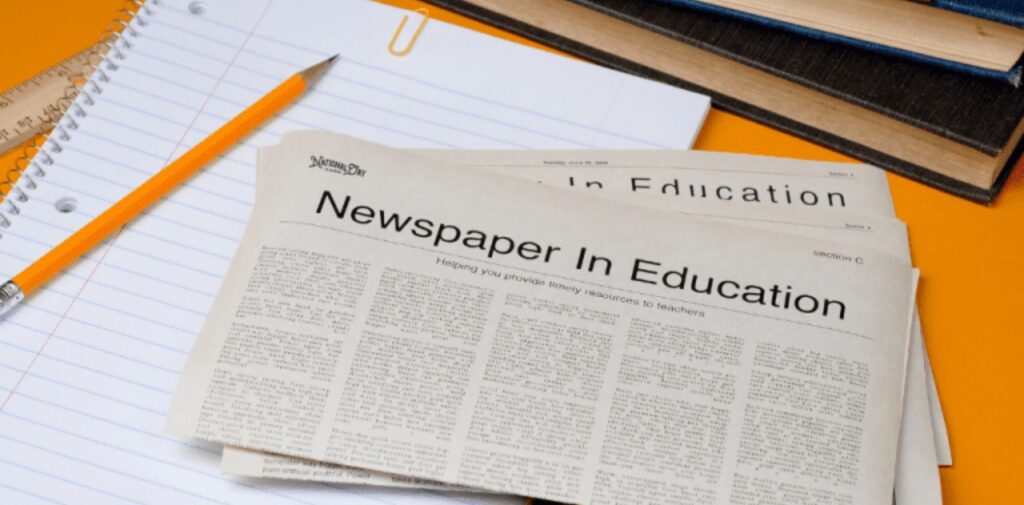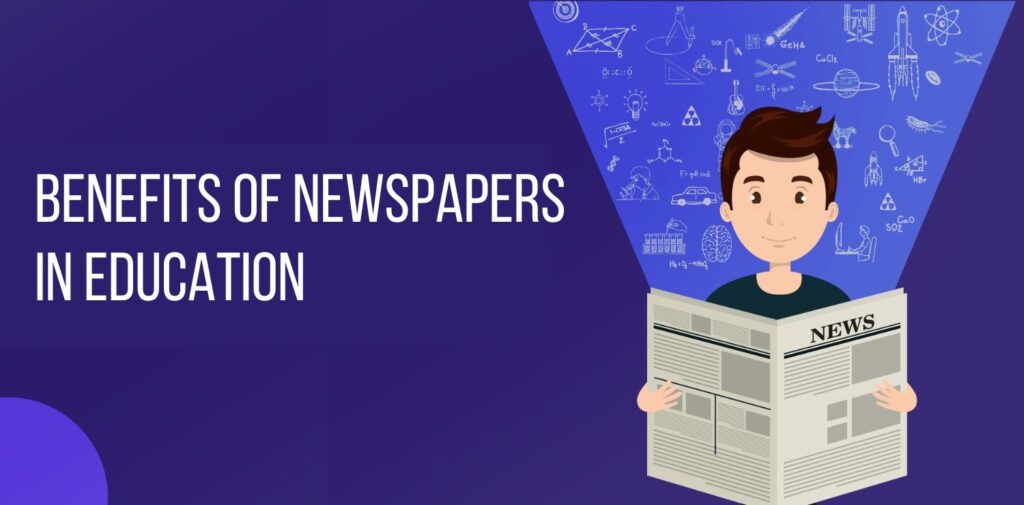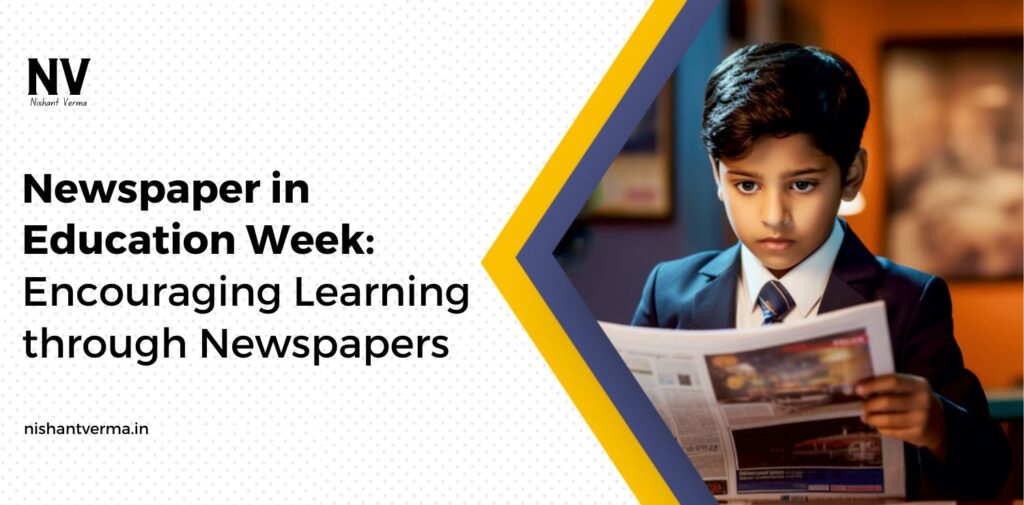Newspaper in Education Week (often referred to as NIE Week) is a special week that celebrates the role of newspapers in shaping education and encouraging learning. This week highlights the importance of newspapers in not only keeping us informed about the world but also enhancing the learning process for students. In India, where the education system is vast and diverse, the inclusion of newspapers as educational tools plays a significant role in bridging gaps, providing real-world knowledge, and helping students become more aware of their surroundings.
Newspapers have been an essential source of information for centuries. They are one of the most trusted forms of communication, offering updates on local, national, and global events. However, beyond the headlines and news stories, newspapers can be a powerful tool for learning, helping students develop critical thinking, reading skills, and a deeper understanding of various subjects. Newspaper in Education Week encourages schools, students, and educators to explore how newspapers can be integrated into the educational curriculum, making learning more interactive, engaging, and relevant.
The Role of Newspapers in Education
Newspapers provide a wide range of content that is both informative and educational. Whether it’s national news, international developments, sports, business updates, or cultural happenings, newspapers cover various aspects of life that are important for students to know about. In a country like India, where students often come from diverse backgrounds, newspapers offer valuable insights into different cultures, lifestyles, and perspectives.
One of the key benefits of using newspapers in education is that they offer real-world examples of topics students learn about in textbooks. For instance, students studying economics can read about the latest market trends, business deals, and government policies. Those learning about science can keep up with the latest discoveries and innovations. Students of history can read articles on current events that reflect historical trends and contexts. By relating classroom learning to real-world events, newspapers make education more relevant and interesting.
Newspapers also help students improve their reading and comprehension skills. Reading news articles requires students to focus, understand complex ideas, and extract key information. This process improves their ability to summarize and critically analyze information, skills that are important in every subject.

Benefits of Newspapers in Education
- Current Affairs Awareness: One of the most significant benefits of using newspapers in education is that they keep students informed about current events. In a country like India, which is constantly changing and evolving, it is important for students to be aware of what is happening around them. Whether it’s a political change, a new government initiative, or a breakthrough in technology, newspapers provide students with up-to-date information that helps them understand the world they live in. Students who stay updated on current affairs tend to be more informed and are able to engage in meaningful discussions. This awareness not only helps in exams but also contributes to the overall development of the student as a well-rounded individual who is aware of global and national issues.
- Improves Language Skills: Regular reading of newspapers helps students enhance their vocabulary, improve their grammar, and become more proficient in reading and writing. The language used in newspapers is often formal and informative, exposing students to a higher level of language that can expand their understanding of words and phrases.
- For example, students can learn new words related to economics, politics, science, and culture. They can also see how words are used in different contexts and improve their ability to structure sentences and express ideas clearly. All of these skills are beneficial for students’ academic performance as well as their personal development.
- Enhances Critical Thinking: Reading news articles requires students to think critically and analyze information. In India, where there are diverse opinions and viewpoints on every issue, it’s important for students to understand that news can be presented in different ways. Newspapers provide multiple perspectives on the same issue, and students must learn to evaluate the credibility of sources and identify bias in reporting. By critically analyzing news stories, students learn how to question, investigate, and form their own opinions. This ability to think critically is not only valuable for academic success but also helps students become responsible and informed citizens who can contribute thoughtfully to societal discussions.
- Promotes Social Awareness and Responsibility: Newspapers expose students to a wide range of issues that affect society, from social problems and environmental concerns to educational reforms and technological advancements. By reading about these issues, students develop a sense of social responsibility and are encouraged to think about how they can contribute to solutions. In India, where social inequality, poverty, and environmental challenges are prevalent, students can use newspapers to learn about these issues and understand their impact on society. They are also introduced to the work being done by government bodies, NGOs, and other organizations to address these challenges. This awareness can motivate students to take part in social causes, volunteer work, and community development efforts.
- Fosters a Love for Reading: Newspapers can spark an interest in reading that extends beyond the classroom. The variety of topics covered in newspapers—sports, entertainment, technology, culture, health, and more—appeals to students with different interests. This makes reading more engaging and enjoyable. Students who develop the habit of reading newspapers are more likely to become lifelong readers, improving their general knowledge and intellectual curiosity.

Newspaper in Education Week in Indian Schools
In India, the celebration of Newspaper in Education Week serves as a reminder of the importance of using newspapers as educational tools. Schools across the country organize various activities, workshops, and events to encourage students to engage with newspapers and explore their potential for learning.
During this week, students may participate in activities such as:
- Reading Sessions: Schools may organize group reading sessions where students read news articles and discuss the content. Teachers can guide students to analyze the article, identify key points, and understand the broader implications of the news. These sessions can focus on a specific topic, such as environmental issues, politics, or science, to encourage in-depth learning.
- News Quiz Competitions: Many schools hold quiz competitions where students answer questions based on current events or newspaper articles. This encourages students to stay updated with the news and test their knowledge. It also promotes teamwork and healthy competition among students.
- Essay Writing and Reporting: Students may be encouraged to write essays or reports based on the news articles they read. They can summarize the article, offer their opinion, or suggest possible solutions to problems discussed in the news. This activity enhances their writing skills, helps them structure their thoughts, and encourages creativity.
- Poster and Art Competitions: Newspapers often feature inspiring stories, particularly in the fields of sports, social work, and innovation. Schools can organize poster-making or art competitions where students create posters to highlight these stories or depict issues they care about. This activity blends creativity with education, allowing students to express their understanding of the news in artistic forms.
- Interactive Discussions: Schools may host discussions or debates on topics covered in the newspapers. Students can discuss issues such as climate change, political reforms, or global conflicts. These discussions foster critical thinking and help students learn to express their opinions in a respectful and constructive manner.

The Digital Age and Newspapers in Education
In the age of digital media, newspapers are no longer limited to print editions. With the rise of online news platforms, students can access a wealth of information from various sources on their smartphones, tablets, and computers. This makes it even easier for students to stay informed and engage with current events.
Digital newspapers also offer interactive features, such as videos, podcasts, and infographics, that make learning more engaging and dynamic. Teachers can incorporate these features into lessons, encouraging students to explore online news sources and become more tech-savvy while learning.
However, it is essential for students to develop good media literacy skills, which help them evaluate the credibility of online news sources and understand how digital news differs from traditional journalism. This is where teachers and schools play an important role in guiding students to be responsible consumers of information.
Conclusion
Newspaper in Education Week serves as an important reminder of the power of newspapers as educational tools. In India, where education is an evolving process, newspapers can help bridge the gap between classroom learning and real-world knowledge. They encourage students to stay informed, think critically, and develop language skills that are essential for academic and personal growth.
By celebrating this week, we not only recognize the role of newspapers in education but also encourage students to become active participants in their learning. Whether it’s reading articles, engaging in discussions, or participating in creative activities, Newspaper in Education Week fosters a love for learning and a deeper understanding of the world around us. It is a week that emphasizes the importance of staying informed, being socially aware, and using the power of the written word to shape our future.




